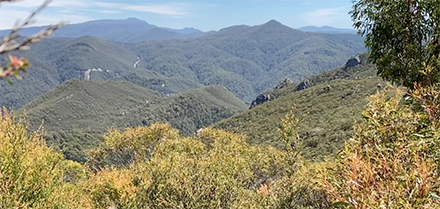Key Tasmanian Forest industry figures are pushing a radical proposal to allow logging of some of the state’s contentious forests in return for most being protected under Indigenous custodianship. Source: The Australian
The concept discussed last month in behind-the-scenes talks involving industry, conservation and Aboriginal figures would see all but 50,000ha of 356,000ha of the most contested forests passed to Indigenous control.
In return, the remaining 50,000ha would be made available for harvesting by a logging industry concerned it is running out of suitable native timber. The concept was discussed at the Mona Forest Economics Congress in November and again at a more intimate gathering at Marion Bay, southeast of Hobart, on 11 January.
It remains highly contentious, with some conservationists staunchly opposed and accusing industry of “blackwashing” and seeking to “wedge” them against the Indigenous community.
The 356,000ha of forests, including parts of takayna/Tarkine, Bruny Island and Blue Tier, were protected under the 2012 forest “peace deal” but later earmarked by government for “potential future” logging.
Industry representatives involved in the discussions included Shawn Britton, acting chair of the Tasmanian Forest Products Association, and the organisation’s chief executive, Nick Steel.
Mr Britton said while the association did not yet have a position on the concept, he believed it had some support and should be further developed.
“It was an idea that had some reasonable interest and support and was an idea worthy of taking further,” he said. “I’m sure it will be discussed again. Resource security is always an issue. The industry will advocate and back a government that’s going to give the industry and its people secure resource outcomes.”
Another industry participant, former Forestry Tasmania managing director Bob Gordon, said the concept was “worth exploring”. Mr Gordon, who has close ties with the ALP, said he had since had “general” discussions with some Labor figures about the idea.
Having been involved in Indigenous timber projects in East Arnhem Land, he believed it could address a shortage of specialty timbers, while involving Aboriginal people in land management.
Aboriginal elder Jimmy Everett, one of three Indigenous figures involved in the talks, said he opposed any logging of old growth but land handbacks would be supported. “We’ve never knocked back any land for return to the Aboriginal community, that’s for sure,” Mr Everett said.
Most conservationists remain opposed to any logging inside the 356,000ha, known as Future Potential Production Forest, or FPPF.
“I am absolutely horrified – this is an attempt to make it look like we can hand back Aboriginal ownership of forests but that there has to be a compromise with that,” said Jenny Weber, Bob Brown Foundation campaign manager.
“No way is that OK. There shouldn’t have been any talk of logging the FPPF. Those forests are all high conservation value and should have been protected.”
The foundation supported Aboriginal ownership without logging trade-offs.
“This is definitely a very worrying move by the industry,” Ms Weber said. “It’s a wedge.”
The future of the 356,000ha is set to be a state election issue, with Resources Minister Felix Ellis not ruling any option in or out.
“We continue to work closely with industry as to if or when it might be necessary to make some of these forests available to Tasmanian sawmills,” Mr Ellis said.
Labor resources spokesman Shane Broad said it was “not proposing any changes” to the forests’ status. Greens leader Rosalie Woodruff said her party “fully supported” Aboriginal land returns but that all 356,000ha should, as intended in 2012, be protected as national park.







